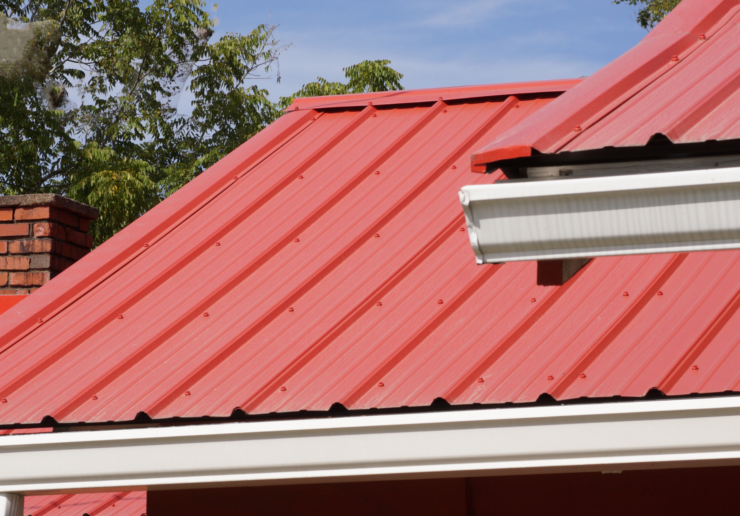
Metal roof flashing does more than just seal joints and protect your home from the elements. With the right color and an elegant design, they can breathe new life into your roofing.
Most people rely on the company that handled their metal roofing project, from start to finish. But suppose you’d like to tackle the job yourself. If that’s the case, read this quick primer on how to install the following metal roof flashings on your home.
Rake trim is placed along the roofline, where the line meets the gable. Its end needs to be cut, angled, and folded to fit the roof side, and meet the end wall and eave.
You’ll also need to apply butyl tape on the underside of the nailing flange. The tape provides a seal against moisture intrusion between the end panel and the trim.
Lastly, align the newly cut, angled, and folded trim onto the roof line, and use fasteners to set it in place. Space the fasteners between 12 and 24 inches apart.
Some metal roof trim pieces are used to keep water away from the roof fascia. These pieces are known as eave trim. When rain lands on your roofing, this type of trim directs it to the ground so that it never comes into contact with the fascia.
Before installing flashing like eave trim, it’s important to set an underlayment before placing the metal pieces. This underlayment helps to prevent moisture penetration.
Installing this type of trim is a bit easier than installing rake trim. While eave trim does need to be cut and folded to fit the fascia and gable, it requires minimal angling to make a proper fit.
The last step is to use screws – again, between 12 and 24 inches apart – to fasten the eave trim in place.
These metal roof trim pieces are installed at the high point of a roof. Their purpose is to prevent moisture from intruding beneath sloping panels.
The first step is to apply tape sealant (butyl tape) along the top edge of the panels. Next, place the outside closure atop the tape, and apply tube sealant along the top of the closure.
The peak trim needs to be cut, angled, and folded to fit on top of the closure as well as the end of the rake trim. Finally, once the trim has been placed, fasteners need to be applied atop each major rib of the metal roofing.
For most people, installing metal roof flashing requires more time and effort than they’re willing to spend. This is the reason they hire experienced metal roofing contractors to manage the project for them.
If you are interested in metal roofing, hot dip galvanizing, or a steel service center in Hawaii, call (678) 259-8800. Kloeckner Metals Hawaii is Hawaii’s most trusted metal roofing manufacturer. We have more than 50 years of experience in delivering high-quality products and top-notch customer support.

Steel base plates are fundamental elements employed in various manufacturing...
Metal fabrication is a critical process that transforms raw metal...
The solar industry has undergone a significant transformation by incorporating...

X
The Kloeckner Metals website uses modern technologies. Unfortunately, your browser doesn't support those technologies.
Download the latest version of one of these browsers to experience the site: